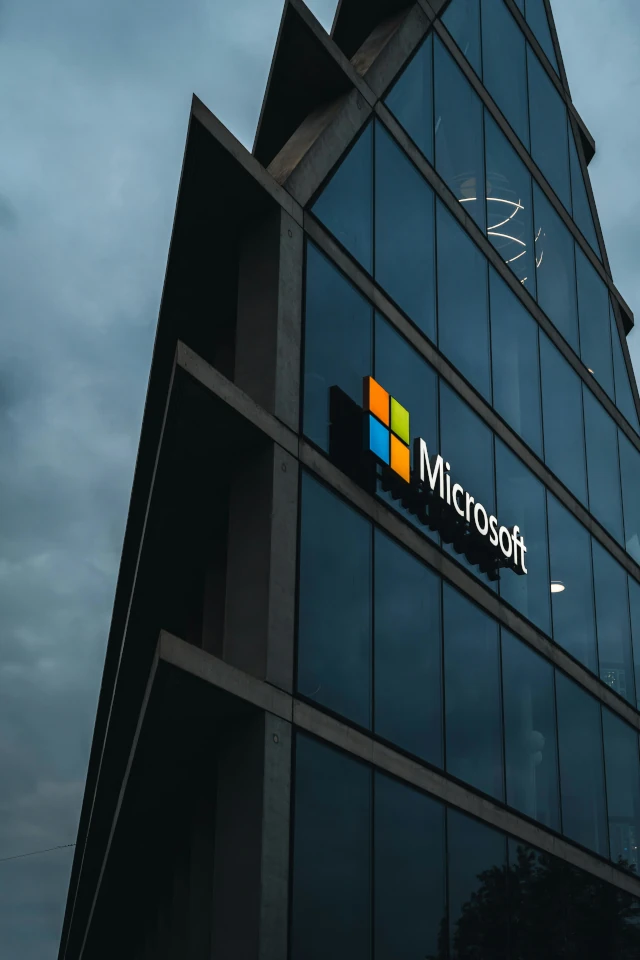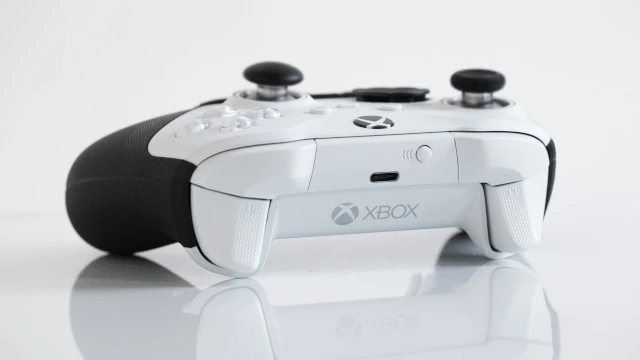In the constantly changing technology industry, Microsoft has remained a dominant force, not just through its innovative products but also due to its robust and adaptive marketing strategies. What are the key components of Microsoft’s marketing strategy that have helped it stay at the forefront of the tech industry?

Customer-Centric Approach
Microsoft’s customer-centric approach is critical to its marketing strategy, playing a pivotal role in shaping the company’s success and sustainability in the competitive tech landscape. At the heart of this approach is an unwavering commitment to understanding and addressing the diverse needs of its vast customer base, which ranges from individual consumers to large enterprises. This deep insight into customer preferences and requirements allows Microsoft to tailor its products and services, ensuring that they not only meet but often exceed customer expectations.
The importance of this approach in Microsoft’s marketing strategy cannot be overstated. By placing customers at the center of all its endeavors, Microsoft creates a powerful connection with its audience. This connection is fostered through regular interactions, feedback mechanisms, and a keen focus on customer experience. Such engagement not only aids in building brand loyalty but also provides invaluable insights that inform future product developments and marketing campaigns.
This customer-centric strategy ensures that Microsoft’s marketing messages resonate more profoundly with its audience. By showcasing how its products solve real-world problems and improve efficiency and productivity, Microsoft’s marketing transcends mere advertising, becoming a narrative that customers can relate to and see value in. This relevance in messaging is critical in cultivating a positive brand perception and retaining a competitive edge in an industry that is constantly evolving.
Brand Positioning and Messaging
Microsoft’s brand positioning and messaging are integral components of its marketing strategy, playing a vital role in how the company communicates its identity and value proposition to the market. By carefully crafting its brand image and messaging, Microsoft has successfully established itself as a leader in the technology sector, synonymous with innovation, reliability, and empowerment.
Central to Microsoft’s brand positioning is the idea of empowering individuals and organizations to achieve more. This messaging is not just a slogan but a reflection of the company’s commitment to delivering products and services that enhance productivity and creativity. This focus on empowerment resonates with a wide range of customers, from businesses seeking efficiency to individuals looking for tools to express their creativity. By consistently reinforcing this message, Microsoft has created a strong emotional connection with its users, positioning its brand as an enabler of progress and success.
Microsoft’s brand messaging is characterized by its clarity and consistency across all platforms and products. Whether it’s their operating systems, office productivity suite, or cloud services, the messaging is always aligned with the core brand values. This consistency helps in reinforcing brand recognition and loyalty, as customers have a clear understanding of what Microsoft stands for and the quality it promises.
Another aspect of Microsoft’s brand positioning is its emphasis on inclusivity and accessibility. By actively promoting these values, Microsoft positions itself as a brand that cares about making technology accessible to everyone, including people with disabilities. This not only broadens their market reach but also enhances their corporate image, as it aligns with the growing consumer preference for brands that are socially responsible.
Microsoft’s brand positioning and messaging are crucial in shaping customer perceptions and decisions. Through a clear, consistent, and emotionally resonant messaging strategy, Microsoft has not only differentiated itself from competitors but has also fostered a strong, loyal customer base. This strategic approach to branding and messaging is a key factor in Microsoft’s enduring success and prominence in the global technology market.
Leveraging Partnerships and Collaborations
Microsoft’s strategy of leveraging partnerships and collaborations is a dynamic facet of its marketing, playing a crucial role in expanding its reach and reinforcing its market position. These collaborations range from high-profile alliances with other tech giants to strategic engagements with smaller players, offering mutual benefits and opening new avenues for growth.
Partnerships, especially in the tech industry, are more than just business deals; they’re a testament to a company’s adaptability and forward-thinking approach. For Microsoft, these collaborations serve multiple purposes. They not only enhance its product offerings through complementary technologies but also help penetrate new markets and segments. Imagine a scenario where Microsoft teams up with a leading hardware manufacturer. This not only boosts the hardware’s capabilities with Microsoft’s software but also introduces Microsoft’s products to a new customer base.
Collaborations act as a catalyst for innovation. By partnering with companies that specialize in different areas of technology, Microsoft gains access to new ideas and perspectives. This cross-pollination of knowledge fuels innovation, leading to the development of cutting-edge solutions that keep Microsoft at the forefront of technological advancements.
These partnerships are a powerful marketing tool. They send a strong message about Microsoft’s position as an industry leader, willing to collaborate and open to synergies. This is particularly important in a fast-paced industry where staying isolated can lead to obsolescence. The partnerships also provide content for compelling narratives in marketing campaigns, showcasing Microsoft as a collaborative and versatile enterprise, further enhancing its brand image.
Leveraging partnerships and collaborations is more than just a business strategy for Microsoft; it’s a vital component of its marketing approach. It allows Microsoft to stay competitive, innovative, and relevant in a rapidly evolving tech landscape, all while enhancing its brand image and expanding its market reach. This strategic use of collaborations underscores Microsoft’s agility and commitment to delivering comprehensive solutions to its customers.
Microsoft’s Innovative Advertising Campaigns
Innovative advertising campaigns are a big part of Microsoft’s marketing strategy, playing a pivotal role in shaping its brand image and driving consumer engagement. These campaigns, characterized by creativity and technological savvy, do more than just promote products; they tell stories, evoke emotions, and create memorable experiences for the audience.
One key aspect of Microsoft’s advertising strategy is its ability to seamlessly blend traditional and digital media. This multi-channel approach ensures a broad reach, engaging customers where they are most active, be it on social media, television, or online platforms. Such a diverse media presence helps Microsoft maintain a consistent and impactful brand visibility across various demographics and geographies.

But it’s not just about the channels used; it’s the content that truly sets Microsoft apart. Microsoft’s campaigns often employ storytelling, a powerful tool that humanizes the brand and makes complex technology relatable. These narratives often focus on how Microsoft’s products empower users, from businesses achieving more with cloud computing to individuals realizing their creative potential with personal computing solutions. This storytelling approach resonates with the audience, making Microsoft’s products more than just tools; they become catalysts for achievement and creativity.
Microsoft’s innovative use of technology in its advertising campaigns reflects its brand ethos. Augmented reality, interactive ads, and AI-driven content are not uncommon in Microsoft’s advertising playbook. These cutting-edge techniques not only showcase Microsoft’s technological prowess but also engage customers in unique and immersive ways, leaving a lasting impression.
Innovative advertising campaigns are instrumental in Microsoft’s marketing strategy. They allow the tech giant to narrate its brand story compellingly, engage with customers across multiple platforms, and showcase its technological innovations. Through these campaigns, Microsoft doesn’t just market products; it builds a brand narrative that aligns with its vision of empowerment and innovation, resonating deeply with its global audience.
Investment in Research and Development
Microsoft’s investment in Research and Development (R&D) is a critical element of its marketing strategy, underscoring its commitment to innovation and technological leadership. This investment is not just about developing new products; it’s a strategic tool that fuels Microsoft’s market positioning and branding.
At the core of Microsoft’s R&D efforts is the pursuit of groundbreaking technologies. These innovations, whether in cloud computing, artificial intelligence, or quantum computing, keep Microsoft at the cutting edge of the tech industry. This continual advancement is vital for a brand that markets itself on the pillars of innovation and future-readiness. When customers see Microsoft consistently introducing novel and improved solutions, it reinforces their perception of the brand as a leader in the tech space.

R&D fuels Microsoft’s marketing narrative. Each breakthrough and technological advancement provides fresh content for marketing campaigns, allowing Microsoft to showcase its expertise and thought leadership. These stories of innovation resonate with customers and stakeholders, building a brand image that is synonymous with progress and forward-thinking.
Microsoft’s substantial investment in R&D is more than just a business strategy. It’s a marketing tool that communicates a clear message: Microsoft is a forward-thinking innovator, constantly pushing the boundaries of technology. This message is crucial for attracting and retaining customers in a highly competitive and rapidly evolving industry.
Focus on Corporate Social Responsibility (CSR)
Microsoft’s focus on Corporate Social Responsibility (CSR) is a strategic aspect of its marketing strategy, reflecting a broader understanding of its role in society beyond just profit-making. In today’s world, where consumers increasingly favor brands that demonstrate ethical practices and social responsibility, Microsoft’s commitment to CSR significantly enhances its brand appeal and loyalty.
This focus on CSR is not just a peripheral activity; it is integrated into the core of Microsoft’s business operations and marketing. By actively engaging in sustainable practices, championing diversity and inclusion, and investing in community development, Microsoft positions itself as a socially responsible and ethical brand. This alignment with societal values resonates deeply with a growing segment of consumers who are conscious about the ethical aspects of the brands they support.
Microsoft’s CSR initiatives provide a rich narrative for its marketing campaigns. Stories of environmental sustainability, efforts in empowering underprivileged communities, and strides in creating inclusive technologies not only showcase Microsoft’s commitment to social responsibility but also build a positive brand image. These stories are compelling to consumers, often creating an emotional connection and a sense of pride in being associated with a brand that is contributing positively to society.
The company’s focus on CSR helps differentiate it in a competitive market. In the tech industry, where many products offer similar functionalities, a strong CSR reputation can be a key differentiator. It enhances Microsoft’s brand reputation, elevating it above competitors as a company that not only innovates but also cares.
This emphasis on CSR is a strategic component of its marketing strategy. It not only aligns with the evolving expectations of consumers but also enhances brand loyalty, differentiates the company in a crowded market, and strengthens its overall brand image. By integrating social responsibility into its business model and marketing narrative, Microsoft demonstrates that it is a company invested not just in technological advancement but in the betterment of society as a whole.
Microsoft’s Marketing Strategy in Summary
Microsoft’s marketing strategy is a multi-faceted and dynamic playbook that has allowed it to maintain its position as a leader in the tech industry. By focusing on customer-centricity, innovative marketing campaigns, strategic partnerships, and a strong commitment to CSR, Microsoft continues to set the standard for how tech companies can effectively market in a rapidly changing digital world.
- Microsoft’s Marketing Strategy: A comprehensive approach encompassing various elements to maintain its leadership in the tech industry.
- Customer-Centric Approach: Focused on understanding and meeting the diverse needs of its customer base, enhancing brand loyalty and product relevance.
- Brand Positioning and Messaging: Emphasizes empowerment, innovation, and inclusivity, ensuring clear and consistent communication across all platforms.
- Leveraging Partnerships and Collaborations: Utilizes strategic alliances to enhance product offerings, innovate, and expand market reach.
- Innovative Advertising Campaigns: Combines storytelling with a multi-channel approach, using cutting-edge technology to create memorable customer experiences.
- Investment in Research and Development: Fuels innovation and technological leadership, reinforcing Microsoft’s image as a forward-thinking company.
- Focus on Corporate Social Responsibility (CSR): Integrates ethical practices and social responsibility into its business, enhancing brand appeal and differentiation in the market.
- Multi-Faceted Approach: Microsoft’s strategy is dynamic, adapting to market trends and customer needs, ensuring sustained relevance and competitiveness.
- Brand Storytelling: Uses compelling narratives in marketing to connect emotionally with the audience, making technology relatable and impactful.
- Market Positioning: Microsoft’s comprehensive strategy positions it not just as a tech company, but as an innovative, socially responsible, and customer-focused leader.
This strategic approach not only ensures sustained market relevance but also fosters a loyal customer base, ready to grow and evolve with the company into the future.

